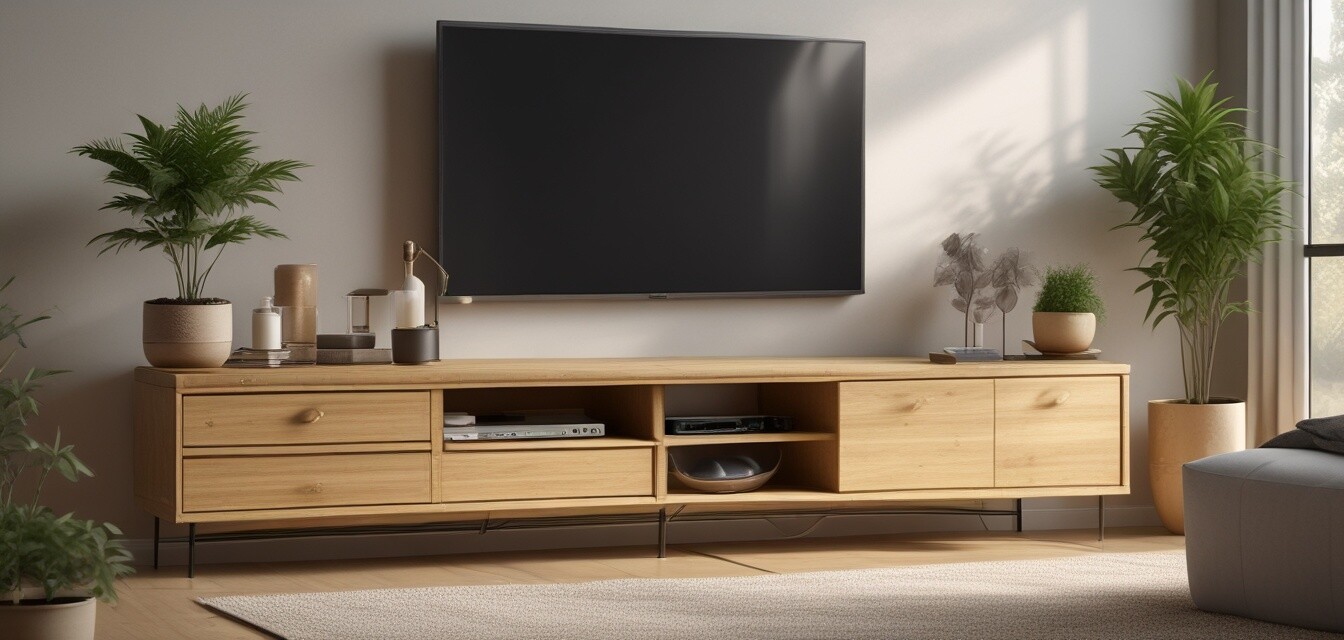
The integration of technology and sustainability in 2025
Key Takeaways
- Innovative materials are changing furniture design.
- Technology is driving sustainability in household goods.
- Consumer preferences are shifting towards eco-friendly options.
- Future designs promise improved functionality and environmental impact.
- Collaboration between tech and furniture industries is on the rise.
The landscape of furniture design is evolving remarkably with the increasing fusion of technology and sustainability. By 2025, these two elements are not only influencing how we perceive furniture, particularly TV stands, but also how we use and interact with our living spaces. This article delves into the innovations that are reshaping the future of sustainable furniture and their implications for consumers.
Current trends in sustainable materials
As consumers become more environmentally conscious, the demand for sustainable materials in furniture production is rising. Here are some materials making waves in the industry:
| Material | Benefits | Examples of use |
|---|---|---|
| Bamboo | Fast-growing, renewable resource | TV stands, shelves |
| Reclaimed wood | Reduces waste, unique aesthetics | Entertainment consoles |
| Recycled metals | Durable, minimizes mining impact | Framework for TV stands |
| Eco-friendly laminates | Low environmental impact, high versatility | Finishes for modular TV stands |
Technological advancements driving sustainability
Technology continues to be a pivotal player in promoting sustainability. Innovations include:
- 3D printing: Allows for intricate designs using less material.
- Smart manufacturing: Uses AI to optimize resources and reduce waste.
- Biomaterials: New types of materials that decompose naturally, reducing landfill waste.
- Smart furniture: Integration of tech features for enhanced user experience while using sustainable materials.
The rise of smart furniture
Smart furniture represents the intersection between technology and furniture design. Not only does it enhance functionality, but it also minimizes environmental impact by utilizing sustainable materials. Features often include:
- Built-in charging stations for electronics, promoting a clutter-free space.
- Adjustable settings for comfort and ergonomics.
- Eco-friendly materials that contribute to a reduced carbon footprint.
Examples of Smart TV Stands
While specific product references are avoided, the concept of smart TV stands includes designs featuring:
- Inbuilt speakers made from recycled components.
- Compatibility with smart home systems.
- Energy-efficient lighting integrated into the design.
Consumer preferences towards sustainability
The changing mindset of consumers significantly impacts the furniture industry. A growing number of individuals now prioritize environmental considerations in their purchasing decisions. Key factors influencing this trend include:
| Factor | Influence on Choices |
|---|---|
| Awareness of environmental issues | Leads to preference for sustainable options |
| Modern design trends | Sparking interest in eco-friendly aesthetics |
| Technological convenience | Increasing demand for functionalities such as app-controlled features |
Future innovations in sustainable furniture
Looking ahead, the collaborations between the tech industry and furniture manufacturers are expected to yield innovative solutions. Future trends might include:
- Enhanced recyclability in all materials used.
- More focus on energy-efficient production methods.
- Utilization of AI and data analytics to design products that are not only appealing but also green.
Conclusion
As we approach 2025, the integration of technology and sustainability in furniture design, particularly in TV stands, is paramount. The pressures of climate change, coupled with changing consumer expectations, are propelling the industry towards more innovative and eco-friendly solutions. This evolution will not only redefine our living spaces but also enhance our interaction with the environment.
Tips for choosing sustainable furniture
- Look for certifications such as Forest Stewardship Council (FSC).
- Research the company's sustainability practices.
- Choose modular designs which can adapt over time.
- Invest in longevity - select durable materials that will last.
Pros
- Promotes an eco-friendly lifestyle.
- Offers modern aesthetics and functionality.
- Encourages sustainable practices through consumer choices.
Cons
- Can sometimes be more expensive than traditional options.
- Availability might be limited in some regions.
Keeping pace with the trends in sustainable home furnishings will not only benefit your living space but also play a role in preserving our planet for future generations. Embrace the changes as we transition to an era where technology and sustainability go hand in hand.